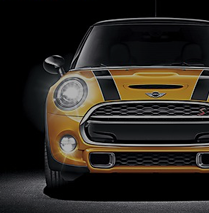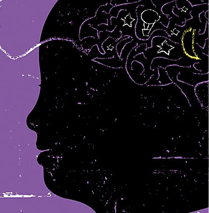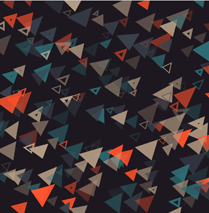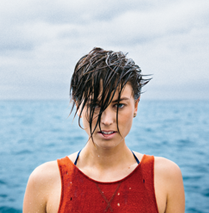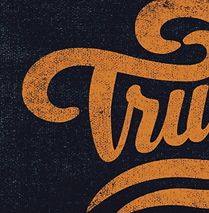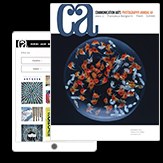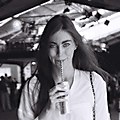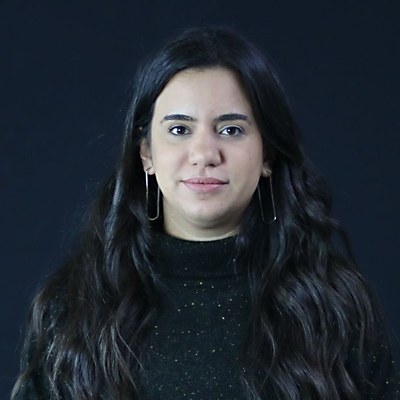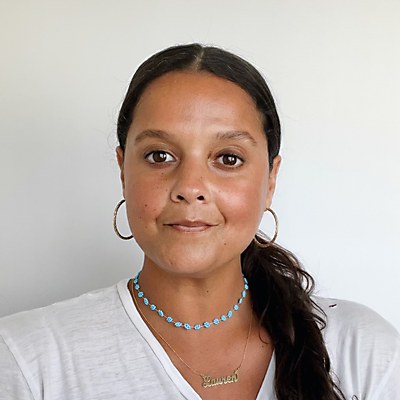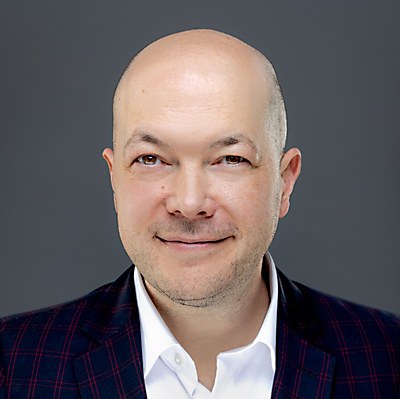How did you get started in digital and interactive design? I started my career in independent filmmaking before moving agency side to work as a creative producer. I cut my teeth on traditional branding and campaign work, then expanded into experiential. When I came to New York–based multidisciplinary design firm DE-YAN, I was introduced to the incredible possibilities of immersive and creative tech.
I’m insatiably curious, and the more I was exposed to innovation, the more questions I had. And I asked a lot of questions. I took every opportunity to sit shoulder to shoulder with tech creators to understand the process of developing AR, VR and AI experiences the same way I had with graphic designers and editors. I uncovered that the biggest difference between traditional design and interactive design had more to do with vernacular than anything else. Once I understood the terminology, I found myself becoming a great collaborator and bridge between different experts.
I’m a firm believer that a strong creative producer can produce anything. The process is the same: seek out to fully understand what it is you’re trying to achieve, develop a team and a road map, and provide the tools needed to achieve it. Being positive, pragmatic and flexible along that process is invaluable.
When did you start working at DE-YAN, and what do you do there as head of operations? I started working at DE-YAN almost four years ago building out the studio’s production offerings, which are now full service from experiential to content, interactive, digital and gaming, among others. Over that period of time—and now as head of operations—I’ve led the studio to experience more than 500 percent growth, not only expanding our offerings but integrating our disciplines into more seamless and holistic experiences for our clients. I work with senior leadership to develop work that pushes our own boundaries as well as our clients’. The studio’s most magical work is when we all flex our multidisciplinary skills into one experience, and we’re always seeking opportunities that allow us to do just that.
With DE-YAN, you’ve worked on projects for high-profile clients like cosmetics brand Fenty and social media platform Snap. What have been some of your favorite projects, and what did you learn while creating them? Both mentioned are two of the wildest and most fulfilling endeavors of my career—but when given the opportunity, I’ll always talk about Rihanna. In the spring of 2020 amid the COVID-19 pandemic and a complete lockdown, our team was challenged with a way to celebrate the launch of Rihanna’s latest venture Fenty Skin. This project became the perfect opportunity for us to showcase how technology can create connected digital experiences without them feeling “tech.” Before metaverse was even a word, we created a totally virtual house party, complete with an AI bartender recommending drink recipes based on the ingredients users had at home, a virtual dance floor with a live DJ set and a connected chat. It was a great learning experience for us to push ourselves and our mental dexterity. Because of the timeline, many things we wanted to include couldn’t be implemented exactly the way we had envisioned them, but we continued to push ourselves and problem solve ways of achieving the same goal. The result was something better than we had anticipated.
Working with Kourtney Kardashian on the launch of her wellness brand Lemme was also a huge achievement and learning experience for the studio. Collaborating so closely with the team as we developed every aspect of the brand—from naming to product design to learning the intricacies of getting those products onto shelves—was incredible. I know so much more about the operations and release of a consumer goods product.
We also did some amazing work recently with music artist Doja Cat for a YouTube performance using all live rendered graphics. It was another project with a wild turnaround time, but it was Doja’s first public performance since her recent creative change, and the result was just insane.
Tell us about DE-YAN’s work for the Council of Fashion Designers of America (CFDA) to create RUNWAY360, a digital platform that supports fashion designers through every step of a collection launch. What was your creative process like? Before the pandemic, we were consistently pitching new ways for brands and partners to expand their digital presence in more meaningful ways, and the CFDA was one of those partners. We had been working with it to develop what we were calling “The Netflix of Fashion,” an entertainment-first one-stop-shop for all the latest fashion shows and collections. When the pandemic was threatening to shut down fashion week for a second season, we knew it was the moment to put the wheels in motion.
The CFDA works tirelessly to give young and emerging designers a stage during fashion week and the chance to garner the attention of buyers, press and consumers alike. With RUNWAY360, we took the democratization of fashion to the next level, letting designers at all levels have a spotlight on the platform as well as the opportunity to sell their latest collections, either through pre-sale or on-demand options. Designing with user-friendly modularity was key in developing the site, the back end of which resembles other creator-focused platforms like Behance or Vimeo. Each designer has the ability to upload assets from their collection, share inspiration and bios, and have complete creative control over what they publish. We developed the site in a matter of weeks, onboarded every designer and launched for fashion week in September 2020 to huge success. We’ve been working with the CFDA on every fashion week since!
What emerging technologies will have the biggest impact on how you create work in the next few years? With technology so integral to our studio ethos, we’re constantly evolving our pipelines and merging our traditional disciplines with the latest creative innovations. We’ve been on a journey to try and eliminate rendering from our workstream, leaning into programs like Unreal Engine and Touch Designer starting to take precedence over C4D and After Effects. We’ve also integrated AI into our creative process, including developing our own diffusion model. It’s been an invigorating layer to our already engaging creative process.
How can studios continue to embrace immersive tech as a tool to reach audiences? The key to embracing technology as a tool to reach audiences is to not think about technology. We approach every challenge asking ourselves: “What is the coolest possible experience? How can we turn that vision into a reality?” You won’t succeed starting with technology. You have to consider the story, the connection and the experience. Then, you have to understand what tools you have that could make the idea even stronger.
When it comes to new media, whose work do you love and look toward for inspiration? There’s no one quite like your first, so for me, it has to be artist Refik Anadol. The use of machine learning, breathtaking visuals and architecturally immersive spaces are par excellence. But realistically, our team also constantly inspires me; the work that they do in and out of the studio blows my mind. It’s an exciting privilege to work with so many creative individuals.
Do you have any advice for young professionals just entering the field of interactive design? No matter what industry you’re entering, dive right in, get your hands dirty and ask a ton of questions! Treat every experience as a learning experience, and don’t be afraid to learn as you go. Demonstrating interest and care in what you do will build trust and respect between your peers, and that reputation will stay with you over your entire career. ca


